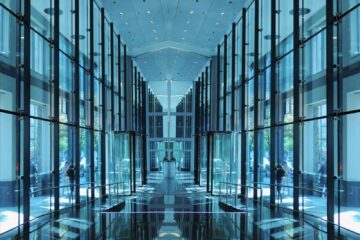Welding is a critical process in various industries, requiring precision, efficiency, and safety. Among the different types of welding gases, argon stands out for its unique and exceptional properties, especially in the context of copper and alloy welding. This article explores the role of argon in welding, leading to improved outcomes in industrial applications.
Why Argon is Essential in Welding
Argon gas is known for its inert properties. It does not react with other elements, making it an ideal shielding gas in welding. In welding, a shielding gas protects the weld area from atmospheric gases like oxygen and water vapour, which can cause defects in the weld. By providing a stable and inert atmosphere, argon ensures the weld is clean and free from contaminants.
Enhancing Weld Quality with Argon
Using argon in welding copper and its alloys has several advantages. One of the most notable is the prevention of oxidation. Copper, being a reactive metal, tends to oxidise quickly when exposed to air during the welding process. By displacing the air around the weld area, argon prevents oxidation, resulting in a cleaner and stronger weld.
Moreover, it helps reduce spatter during welding. Spatter, the small particles of molten metal ejected from the weld, can create an unsightly and weak weld. By providing a stable arc, it minimises the occurrence of spatter, leading to a smoother and more visually appealing weld.
Improved Penetration and Control
In welding, penetration refers to the depth to which the weld metal fuses with the base metal. Adequate penetration is crucial for the strength and durability of the weld. Argon gas enhances penetration by stabilising the welding arc, allowing the welder to achieve more profound and consistent welds. This stability also provides better control over the welding process, making it easier to weld thin sections of copper and alloys without burning through the material.
Uses in Alloy Welding
When welding alloys, the choice of shielding gas becomes even more critical due to the varied properties of different metals. Alloys often have different melting points and chemical compositions, complicating welding. With its inert nature, argon ensures that the various components of the alloy do not react with the atmosphere, maintaining the integrity of the weld.
Argon is effective in welding aluminium alloys. Aluminium, like copper, oxidises rapidly, forming an oxide layer that can interfere with the entire welding process. Argon prevents this oxidation, ensuring a clean and high-quality weld. Additionally, it can be mixed with other gases, such as helium, to improve the weld’s characteristics depending on the alloy’s requirements.
Cost-Effectiveness and Availability
While argon gas may be more expensive than other shielding gases, its benefits often outweigh the costs. The improved weld quality, reduced defects, and enhanced control can lead to massive savings in the long run. Less rework is required, and the durability of the welds means fewer repairs and replacements.
It is also widely available and relatively easy to handle, making it a practical choice for many welding applications. Its non-toxic and non-flammable properties contribute to a safer working environment, a crucial consideration in industrial settings.
In copper and alloy welding, argon gas is a superior choice due to its inert and noble properties, ability to prevent oxidation, and role in producing high-quality welds. The improved control, penetration, and overall weld quality make it an invaluable asset in industrial welding applications. While an upfront cost may be associated with argon, the long-term benefits, including reduced rework and compliance with safety and environmental standards, make it a cost-effective and practical solution. Embracing the advantages can lead to better outcomes and efficiency in welding operations, reinforcing its status as a vital component in the industry.

Lala is an experienced SEO Specialist & Content writer. He’s been doing it for five years. He really enjoys writing Biographies about famous people Like reporters, social media stars, Journalists, Fitness Enthusiasts, and business owners.




